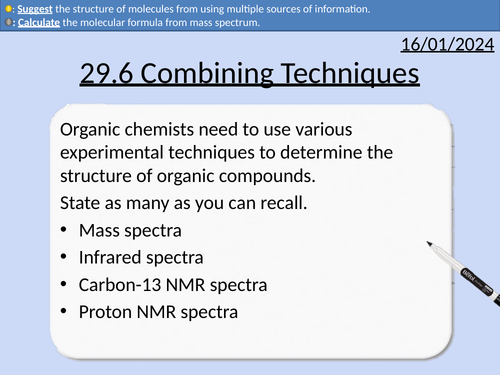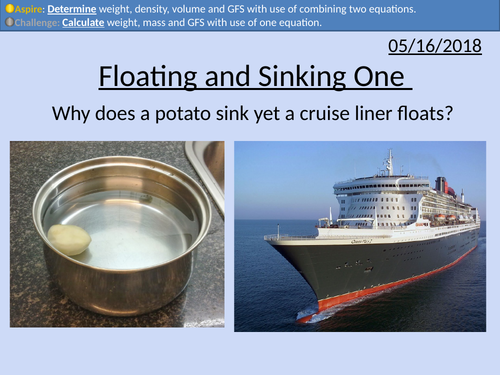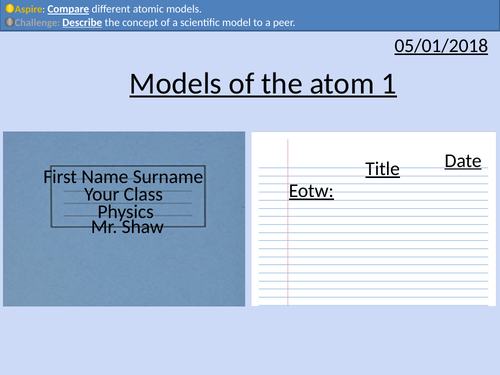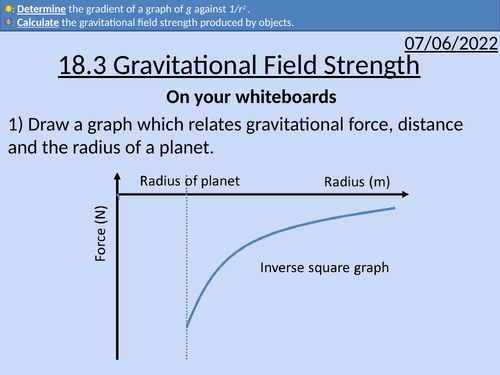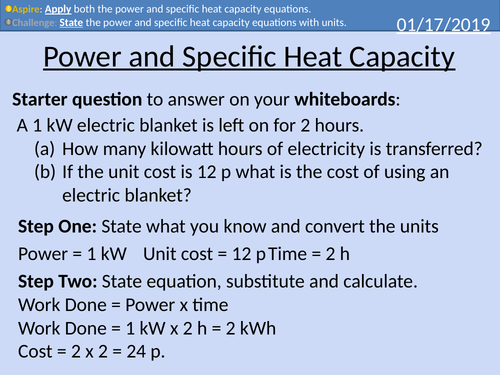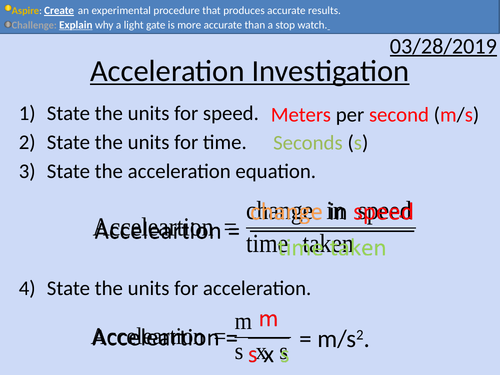497Uploads
169k+Views
72k+Downloads
All resources

OCR A Level Physics: Gravitational Fields
OCR A Level Physics: Gravitational Fields presentation, homework and answers.

A level Chemistry: Combined Techniques
OCR A level Chemistry: 29.6 Combined Techniques
This PowerPoint is a whole lesson included with student activities, animated answers, homework questions with answers provided.
This lesson covers:
Percentage yield to determine empirical formula
Mass spectra
Infrared spectra
Carbon-13 NMR spectra
Proton NMR spectra

OCR AS Physics: LDR
OCR AS Physics: LDR is a part of the Module 4: Electrons, Waves, and Photons. PowerPoint with worked examples and homework.
Materials and uses of LDRs
Creating an experiment to understand LDRs
LDRs relationship with light intensity

OCR AS Physics: Diffraction and Polarisation
OCR AS Physics: Diffraction and Polarisation is a part of the Module 4: Electrons, Waves, and Photons. PowerPoint with worked examples and homework.

OCR AS Physics: Electromagnetic Waves
OCR AS Physics A: Electromagnetic Waves is a part of the Module 4: Electrons, Waves, and Photons. PowerPoint with worked examples and homework.

GCSE Physics: Simple Circuits
This presentation covers OCR Gateway Physics 9-1 P3.2.1 Simple Circuits.
Circuit Symbols
Electric field lines and potential difference
Modeling Circuits with Rope
Measuring Potential Difference
Energy Transferred Equation for Electricity
Rearranging Equations

Physics Display - Science Jobs/Women in Physics
Several word documents with content concerning women in physics and jobs in physics. These displays are in line with IoP recommendations to promote women in physics.

GCSE OCR Physics: Building A Motor
GCSE OCR Physics: Building A Motor powerpoint with instruction on how to construct a motor activity.

GCSE Physics: Floating and Sinking
This presentation covers OCR Gateway Physics 9-1 P1.3.5 Floating and Sinking
Content Covered:
Balanced Forces
Rearranging equations
Mass and weight
Gravitational field strength
Pressure
Liquid Pressure
Difference in pressure causing up thrust
Combining two equations
Worked solutions
Exam Style Questions
Problems with answers
Demonstration

GCSE Physics: Atomic Model 1
This presentation covers OCR Gateway Physics 9-1 P1.1.1
Covers:
Scientific Models
Ancient Greek Model
Dalton’s Model
JJ Thomson’s model

GCSE Physics: Gravitational Force and Energy
This presentation covers OCR Gateway Physics 9-1 P2.3.3 Gravitational Force and Energy
Gravitational fields
Gravitational field strength and mass
Gravitational energy and work done
Exam style questions and solutions
Student problems with answers

GCSE OCR Physics P2 Test
35 mark assessment with mark scheme for P2 from OCR Gateway Physics 9-1.
• 5 multiple choice questions
• Scalars and Vectors
• Speed
• Acceleration
• Equation of Motion
• Velocity-time graph
• Included physics equations
• PIN cover sheet

GCSE OCR Physics P2 Scheme of Work
Middle term plan for OCR Gateway Physics P2
This coveres:
Code
Combined or Triple
Number of lessons
Math Skills
Equations Introduced
Skills Developed
Content Covered
Practical or Demo

OCR A Level Physics: Gravitational Field Strength
OCR A Level Physics: Gravitational Field Strength presentation with homework and answers

GCSE Physics: Speed Equation
This PowerPoint presentation with worked examples and student questions covers:
• The speed equation and units
• Rearranging Equations
• The skill of estimating

GCSE Physics: Power and Specific Heat Capacity
This presentation covers OCR Gateway Physics 9-1 P7.2.3 Power and Specific Heat Capacity.
• Energy Transfers
• Equations and units
• Worked Exam Style Question
• Student questions with numerical solutions

GCSE Physics: Introduciton to Physics
This presentation covers diversity in physics both within the physics community and also with the breadth of what is classified as physics. It contains class activities, a video, and also a research task which could be completed as a class task or as set homework.

GCSE Physics: Acceleration - Planning an Experiment
This PowerPoint presentation with worked examples and student questions covers:
Choosing equipment with higher resolution
Planning an experiment to determine acceleration

GCSE Physics: Introduction to Forces
This PowerPoint presentation with worked examples and student questions covers:
Contact and Non-contact forces
Forces and accelerations
Tug of war example

GCSE Physics: Electricity and Subatomic Particles
This PowerPoint presentation with worked examples and student questions covers:
• Atoms and the particle model for solids, liquids and gases
• Subatomic particles and the property of charge
• Structure of a metal
• Explanations of the Van de Graff and Lightning.


